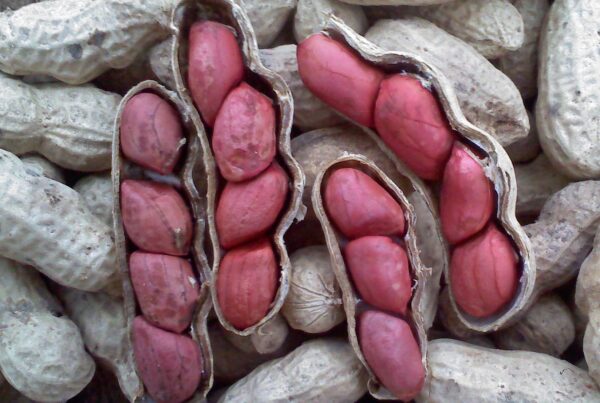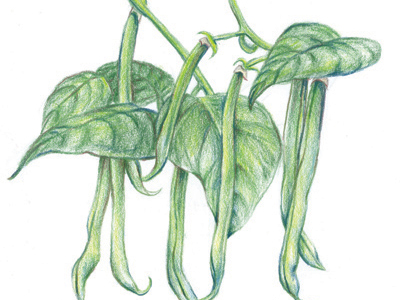The 4th Saturday in January was National Seed Swap Day and I had the pleasure of celebrating the occasion early far away from home in Little 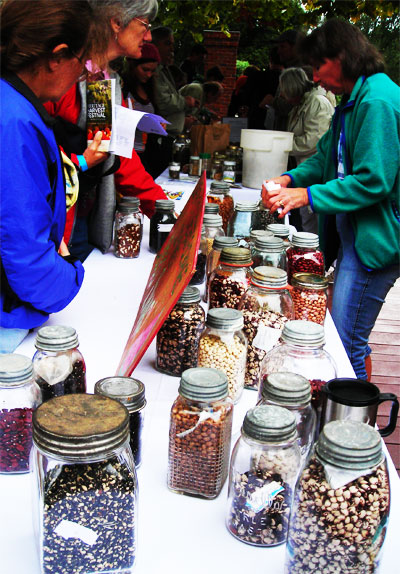 Rock Arkansas at the Southern Sustainable Agriculture Working Group (SSAWG) Community Seed Swap. Seed Swaps are a great way to meet other local gardeners and great free samples of interesting new varieties of vegetables and flowers to grow in your own garden. If you would like to organize a Seed Swap in your area Southern Exposure Seed Exchange has a handy online guide How to Host a Seed Swap for planning a local event and will also donate seeds to help your Seed Swap get off to a good start.
Rock Arkansas at the Southern Sustainable Agriculture Working Group (SSAWG) Community Seed Swap. Seed Swaps are a great way to meet other local gardeners and great free samples of interesting new varieties of vegetables and flowers to grow in your own garden. If you would like to organize a Seed Swap in your area Southern Exposure Seed Exchange has a handy online guide How to Host a Seed Swap for planning a local event and will also donate seeds to help your Seed Swap get off to a good start.
By mid-February you should finish planning your garden and start planting in flats. Lots of gardeners are turning to the new online Garden Planner tools to help with getting their initial plan finalized, adding in succession plantings, figuring out how many seeds to buy and making sure the crucial summer plantings for a successful fall and winter harvest happen on time. Many of these tools including our Southern Exposure Garden Planner will send you a reminder of what needs to be planted every other week. Most of the planners have a one month free trial so if you are even a little bit comfortable with online tools check out a few and give one a try. I’ll guarantee you’ll think gardening just got easier.
However you make you plan and figure out which seeds you need do it early in the month check to make sure you have all your seeds ordered and ready to start your earliest plantings. Indoors or in a cold frame, start some lettuce, parsley, early cabbage and broccoli. Finish sowing any remaining onions from seed and hot peppers like Habanero early in February because they are very slow growing until the days get longer and the temperatures warmer.
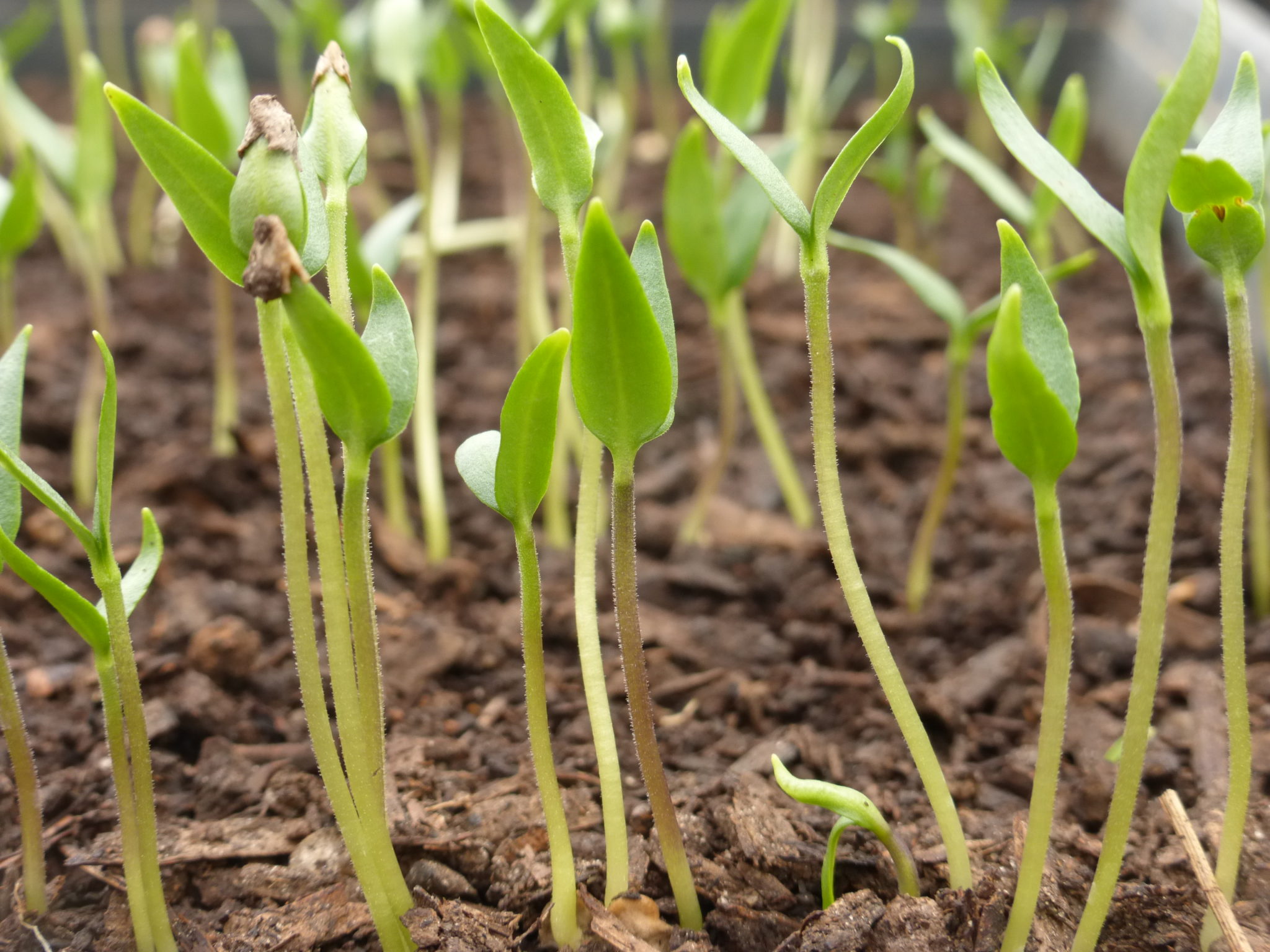 Start more broccoli, cauliflower, cabbage, celery, Chinese greens, and lettuce in flats. By the middle of February you can start sweet bell peppers and eggplant seeds. Later in the month start your first tomato seedlings. Although I have to admit I always start a few extra early tomato seedlings too early in February. If you do this be prepared to move them up to an 8†or 10†pot before it is warm enough to put them outside. A cold tolerant Russian variety or an extra early variety like Glacier or Stupice works well if you just can’t wait. I am lucky to have a greenhouse for my early planting madness. If you don’t have a greenhouse I suggest growing your earliest seedling under florescent lights. Hang the lights on chains so you can move the lights up as the seedlings grow. Keep your lights just a few inches above the plants for sturdy little seedlings.
Start more broccoli, cauliflower, cabbage, celery, Chinese greens, and lettuce in flats. By the middle of February you can start sweet bell peppers and eggplant seeds. Later in the month start your first tomato seedlings. Although I have to admit I always start a few extra early tomato seedlings too early in February. If you do this be prepared to move them up to an 8†or 10†pot before it is warm enough to put them outside. A cold tolerant Russian variety or an extra early variety like Glacier or Stupice works well if you just can’t wait. I am lucky to have a greenhouse for my early planting madness. If you don’t have a greenhouse I suggest growing your earliest seedling under florescent lights. Hang the lights on chains so you can move the lights up as the seedlings grow. Keep your lights just a few inches above the plants for sturdy little seedlings.
If you prepared some beds last fall and covered them with mulch, landscape fabric or cardboard getting an early start on spring planting will be easy. If like you are like most gardeners keep an eye on the weather forecast and the moisture content of your soil. The first warm day when the soil in your garden is dry enough for a handful that you squeeze tightly to easily crumble when thrown on the ground get out and prepare a couple of beds for planting. We like pre-sprouting spinach, pea, carrot, and beet seeds on paper towels in an incubator for our extra early plantings in the spring. These can be planted every two weeks. Then transplant them out under spun polyester agricultural fleece or “row covers†as soon as they send out their 1st little roots. You can use a heating mat to speed up germination and get your early seedling flats off to an early start. As soon as the weather warms up a little switch to direct sowing these seeds and add other cool weather greens like spinach, Bok Choi, Lettuce, Mizuna, Mustard and early lettuce varieties.
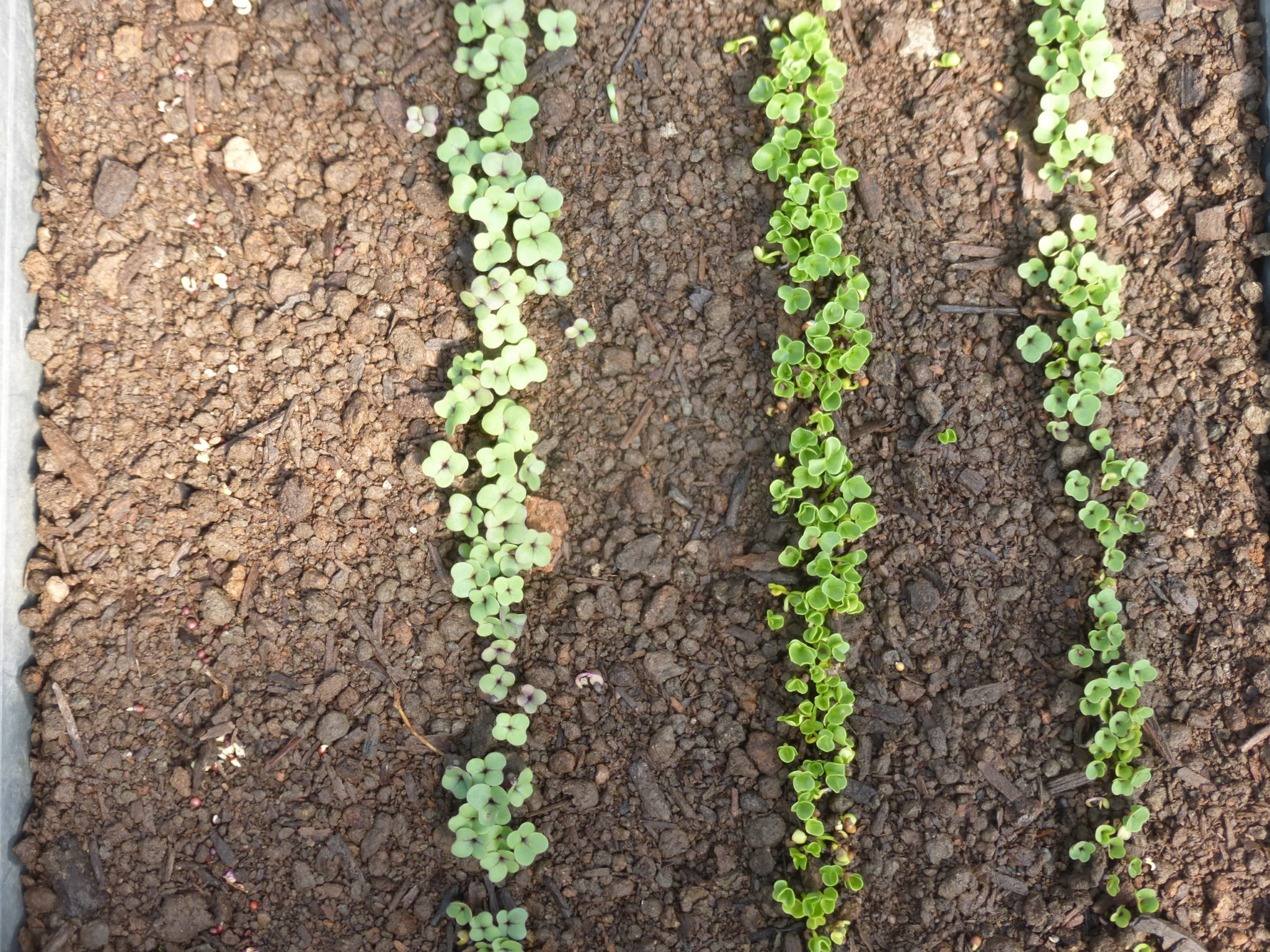 Cold Frames and polyester floating row cover can really speed up the early regrowth of wintered over greens or the growth of early spring greens and roots. Last fall I had such good results with strawbale and wire temporary cold frames that I plan to use both again this spring if we ever get enough cold weather to slow down the growth of my winter garden. We are still harvesting collards, Lacinato Rainbow kale, Red Russian kale, tatsoi, spinach, Brussels sprouts, arugula, cilantro, chard, red oakleaf and Bronze Arrow lettuce as well as smaller quantities of a number of other varieties. All of this bounty is either uncovered or just covered with a single layer of row cover. We expected most of these plants to have taken a break from growing during the Persephone days but not this year. They just kept on growing just a little slower. We’ll have to wait and see what February and March bring in the way of weather.
Cold Frames and polyester floating row cover can really speed up the early regrowth of wintered over greens or the growth of early spring greens and roots. Last fall I had such good results with strawbale and wire temporary cold frames that I plan to use both again this spring if we ever get enough cold weather to slow down the growth of my winter garden. We are still harvesting collards, Lacinato Rainbow kale, Red Russian kale, tatsoi, spinach, Brussels sprouts, arugula, cilantro, chard, red oakleaf and Bronze Arrow lettuce as well as smaller quantities of a number of other varieties. All of this bounty is either uncovered or just covered with a single layer of row cover. We expected most of these plants to have taken a break from growing during the Persephone days but not this year. They just kept on growing just a little slower. We’ll have to wait and see what February and March bring in the way of weather.
New to seed sowing? Expanding into direct sowing or beginning to grow your own transplants? Our Beginner’s Growing Guide to Starting from Seed covers the basics. For a more comprehensive resource, our standby is Nancy Bubel’s classic guide The New Seed Starter’s Handbook.
Let’s get Sowing!
Ira Wallace Southern Exposure Seed Exchange & author of The Timber Press Guide to Vegetable Gardening in the Southeast and Grow Great Vegetables in Virginia

